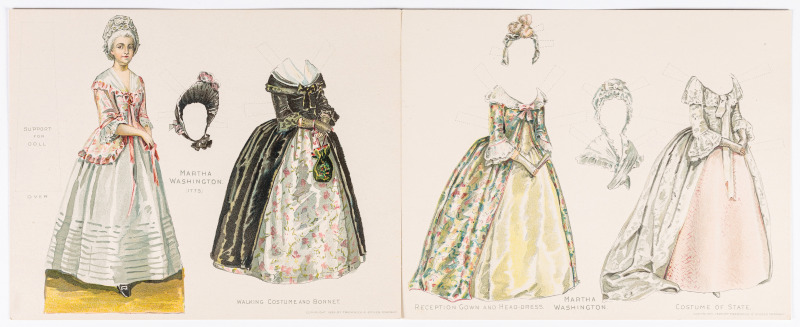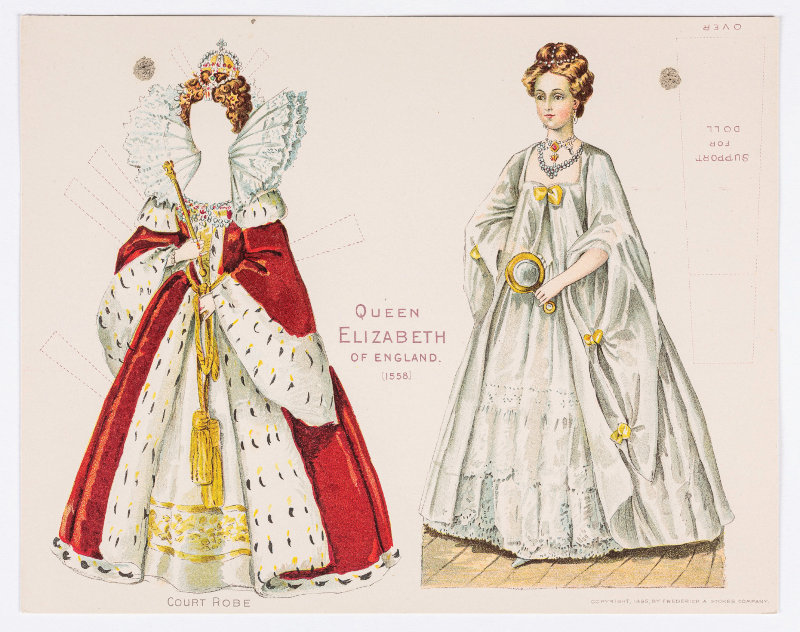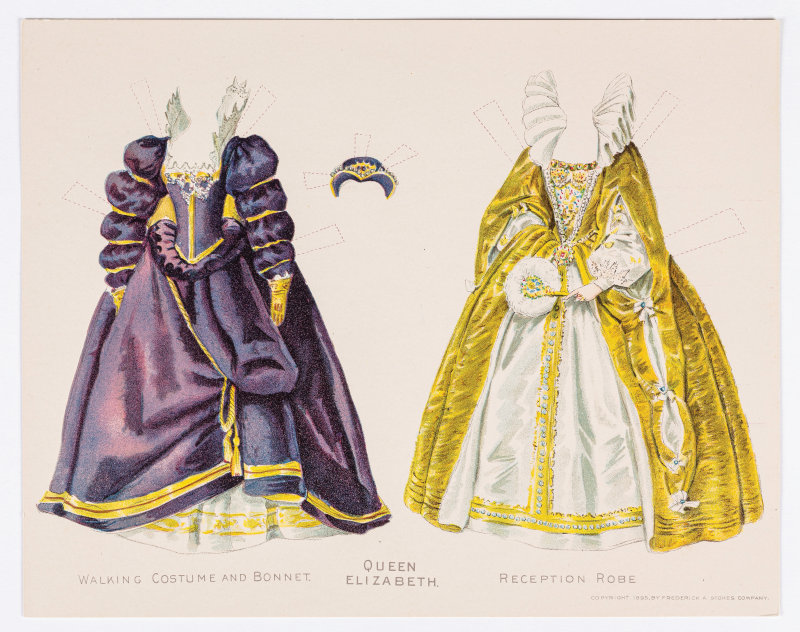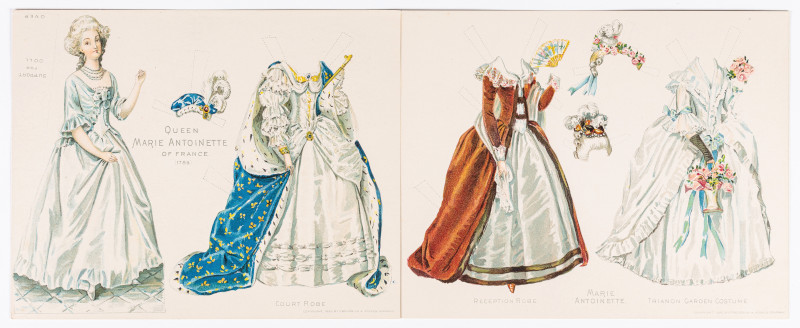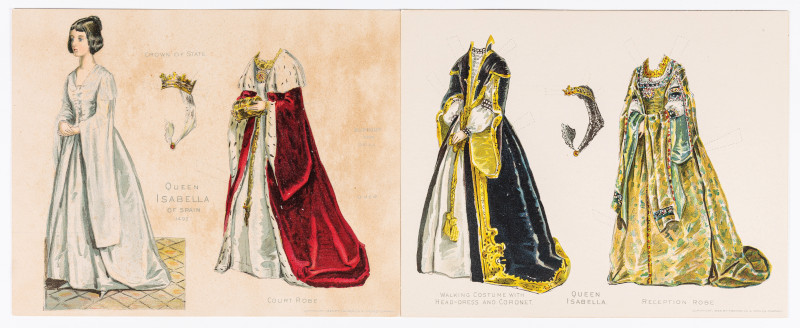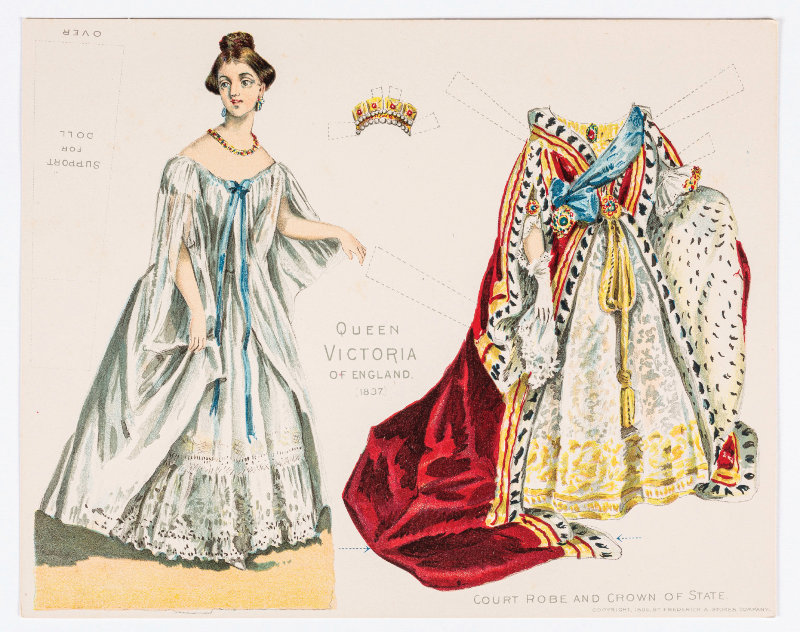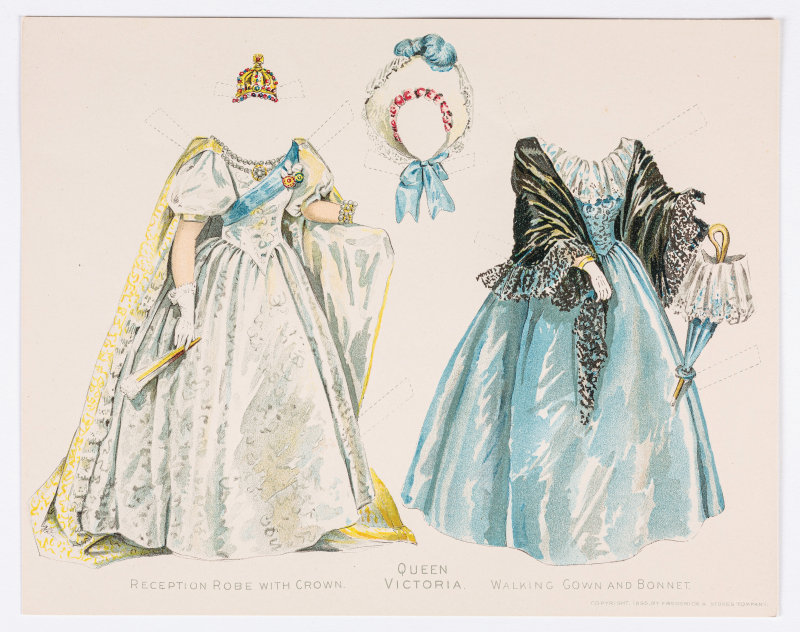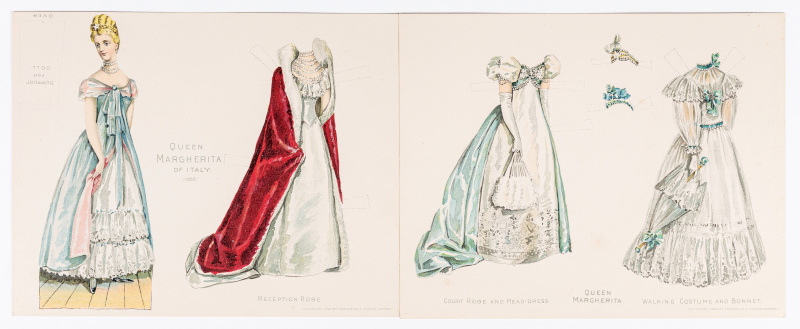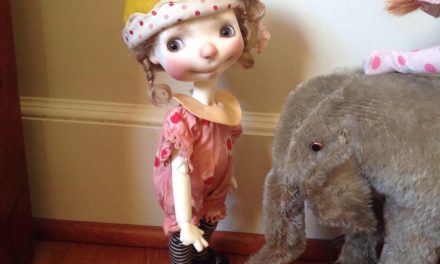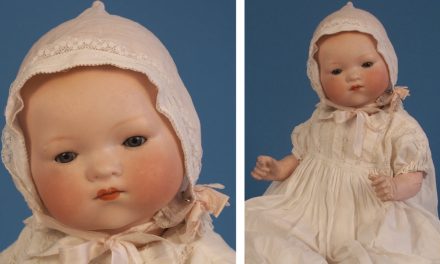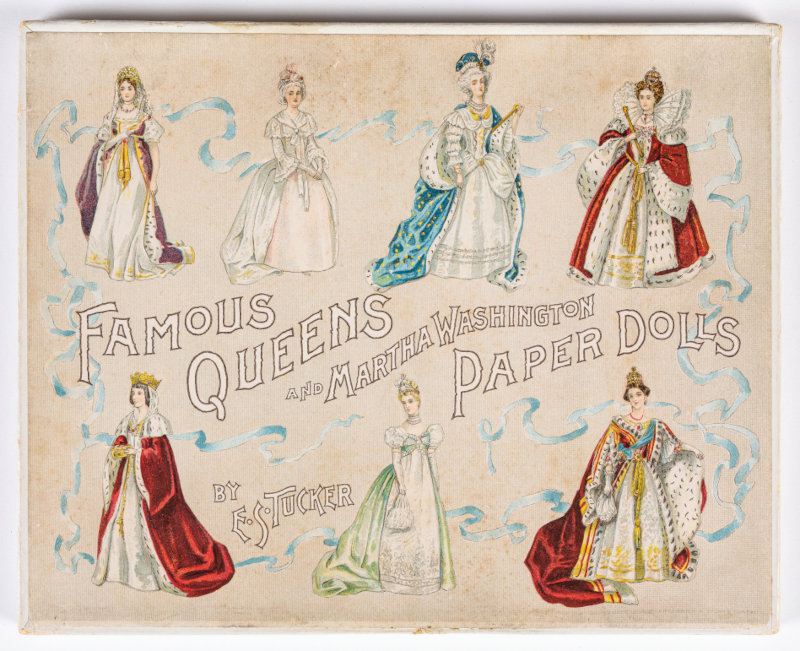
By Karen B. Kurtz
Photos courtesy of American Antiquarian Society (AAS) in Worcester, Massachusetts
Back in the day, when women sought useful employment beyond the home, book publishers hired women artists to paint paper dolls. The delicate appeal of portrait paper dolls from the 19th century has never been duplicated. They are highly prized when acquired.
Let’s explore Famous Queens and Martha Washington, a complete boxed set of early portrait paper dolls created by Canadian artist Elizabeth S. Tucker with soft-toned watercolors. In 1895, Frederick A. Stokes and Company in New York used the chromolithography process to print them. Seven women comprise the set: Queen Marie Antoinette from France, Queen Isabella I from Spain, Queen Elizabeth I of England, Queen Louise from Prussia, Queen Victoria from England, Queen Margherita from Italy, and Martha Washington.
Little is known why Martha Washington was included with the most commanding European queens from history, but a Feb. 12, 1895, advertisement in the New York Tribune promoted Martha Washington and the other sets for sale individually, too. “Seven famous women represented by these ‘Dolls,’ each with three different costumes, varied in design, rich in color, and historically accurate. … Price, in a box with bright colors, 75 cents. Each ‘Doll’ may also be had separately in a box, with cover in colors, 25 cents,” the ad said.
Promotion continued in a booklet: “This set represents an entirely new departure in the way of paper dolls, as it combines most beautiful and artistic color-work with historical features of great value, which will at the same time entertain and instruct any child. The watercolor sketches for this set have been reproduced in many colors and in a high grade of work rarely used in publications of this sort. The set is especially recommended for Kindergartens and schools, [where] children cut out the dolls with scissors, or a knife, in the usual way familiar to all children who play with paper dolls.”
Girls learned small-muscle control and patience while sewing — skills that easily transferred to cutting out paper dolls. Small scissors were now inexpensive enough for middle-class children to own. The burgeoning suffrage movement made Famous Queens and Martha Washington a timely gift of great value for families. The idea that history could now include interesting women, as well as men, had entered the collective consciousness.
Tucker was already famous by the time Famous Queens and Martha Washington was published. Elizabeth Smithson Tucker Tilley grew up in St. John, New Brunswick, Canada. At age 35, she married Herbert Chipman Tilley in New York. It was a life of privilege among society’s top tier. They were married for 11 years. After he died, she continued working. Four American publishers (Stokes, Worthington, Louis Prang, and Roberts Brothers) kept her busy. Tucker’s oeuvre is still available at online sellers and Goodreads; WorldCat lists her most widely held works.
Frederick A. Stokes was known for publishing high-quality art and deluxe children’s books. The low-cost advantage of chromolithography allowed full-color mass production of Tucker’s reproduced artwork that duplicated her hand-painted originals. Tucker probably did not have access to portraits or fashions of the aristocracy, but illustrated reproductions were available. Or she gleaned fashion ideas from international courts. At any rate, she chose to nostalgically celebrate one historic year in each woman’s life.
Queen Marie Antoinette, a once happy child who loved dolls, favored extravagance and excess, and grew out of touch with her people’s suffering. Tucker depicted Queen Marie Antoinette in 1789, during the French Revolution, before her execution by guillotine.
Queen Isabella financed Christopher Columbus’s voyage to the North American continent in 1492. A devout Catholic, she lived an austere, temperate lifestyle and her fashions reflect this look. In 1974, the Vatican recognized her as a Servant of God, a step toward canonization.
Elizabeth I became Queen of England in 1558. During her reign, she established the Church of England, the English navy defeated the invading Spanish Armada, and she became a popular monarch, earning the nicknames the Virgin Queen and Good Queen Bess.
Martha Washington endured harsh conditions in 1775 at General Washington’s winter camp. He sought reimbursement from Congress for her traveling expenses because her presence was so essential. Tucker depicted a young Martha Washington, a welcome change from her matronly portraits later as First Lady.
The consort of King Frederick William III (crowned in 1797) of Prussia, Queen Louise was loved for her grace, beauty, generosity, and courage. When she concealed a swelling on her neck with a becoming gauze scarf, fashionable ladies everywhere were soon swathed to the chin. The swelling disappeared, but doll collectors still covet the desirable “Blue Scarf Lady” from Alt, Beck and Gottschalck, circa 1880s, and Emma Clear, 1940s.
Queen Victoria ascended to the English throne in 1837, when she was only 18 years old. England reached its greatest period of international expansion during her long reign, which spanned the 19th century. Tucker illustrated a youthful Queen in her coronation year.
Margherita of Savoy married her first cousin, Umberto, the crown prince of Italy, in 1868. Their marriage was troubled by King Umberto I’s infidelities, so as queen consort, she focused on her official state duties and was a patron of the arts and music. After her husband was assassinated, she continued to support hospitals and churches. Supposedly, the Margherita pizza, with red tomatoes, green basil, and white cheese to represent the Italian flag, was named after her.
Famous Queens and Martha Washington provides a wonderful way to learn more about historical events through the experiences of seven iconic women of the time. In preserving this exceptional set of paper dolls, American Antiquarian Society has shared with us what every parent and teacher knows: simple, imaginative play is the best play.
Karen B. Kurtz specializes in writing about dolls, history, and antiques. Find out more at www.karenbkurtz.com and sophiasgiftbook.com.
Author Acknowledgments
Thanks go to librarian Brianne Barrett, Vice President of Collections Lauren Hewes, and photographer Nate Fiske at American Antiquarian Society in Worcester Massachusetts.

